Image Archive



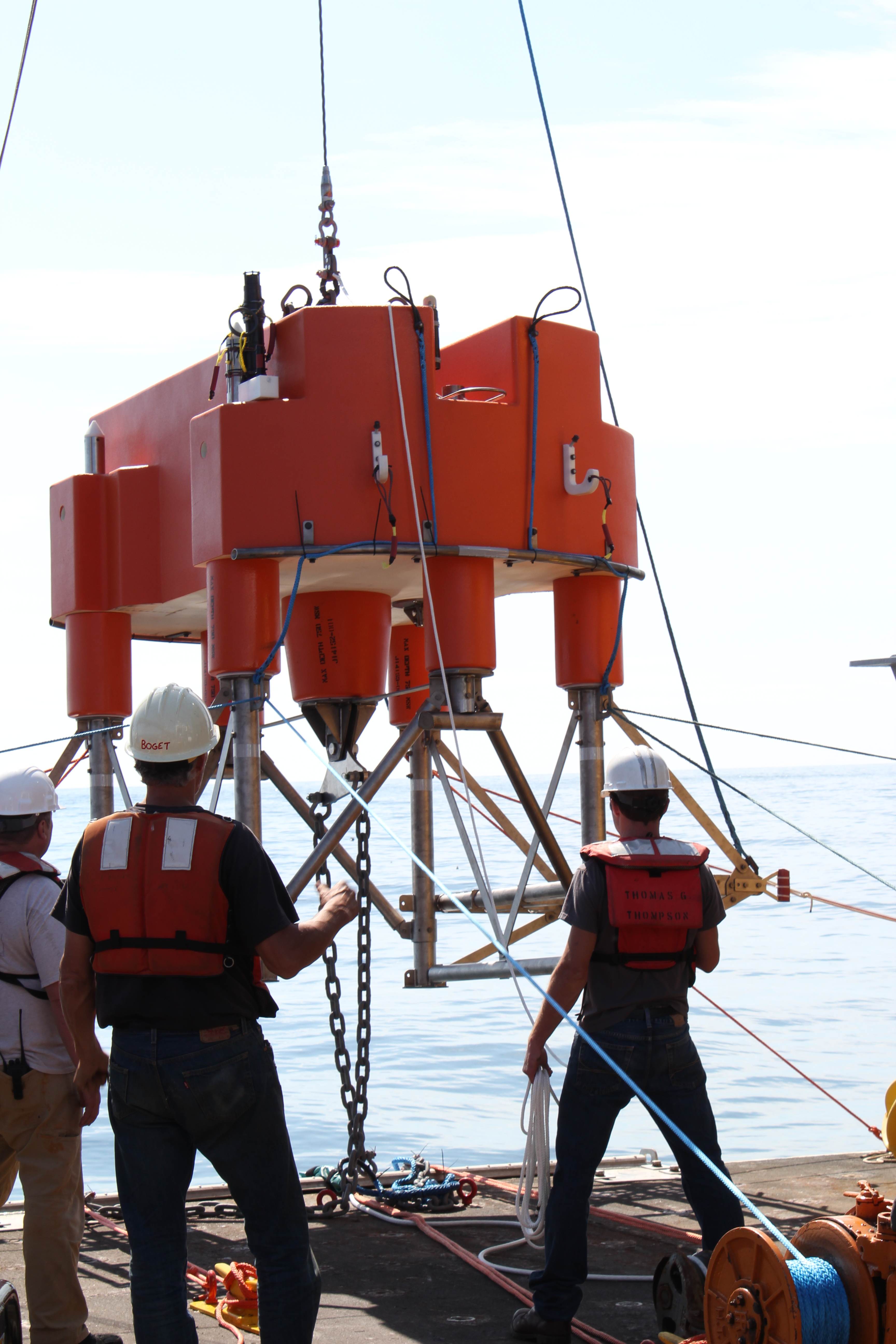

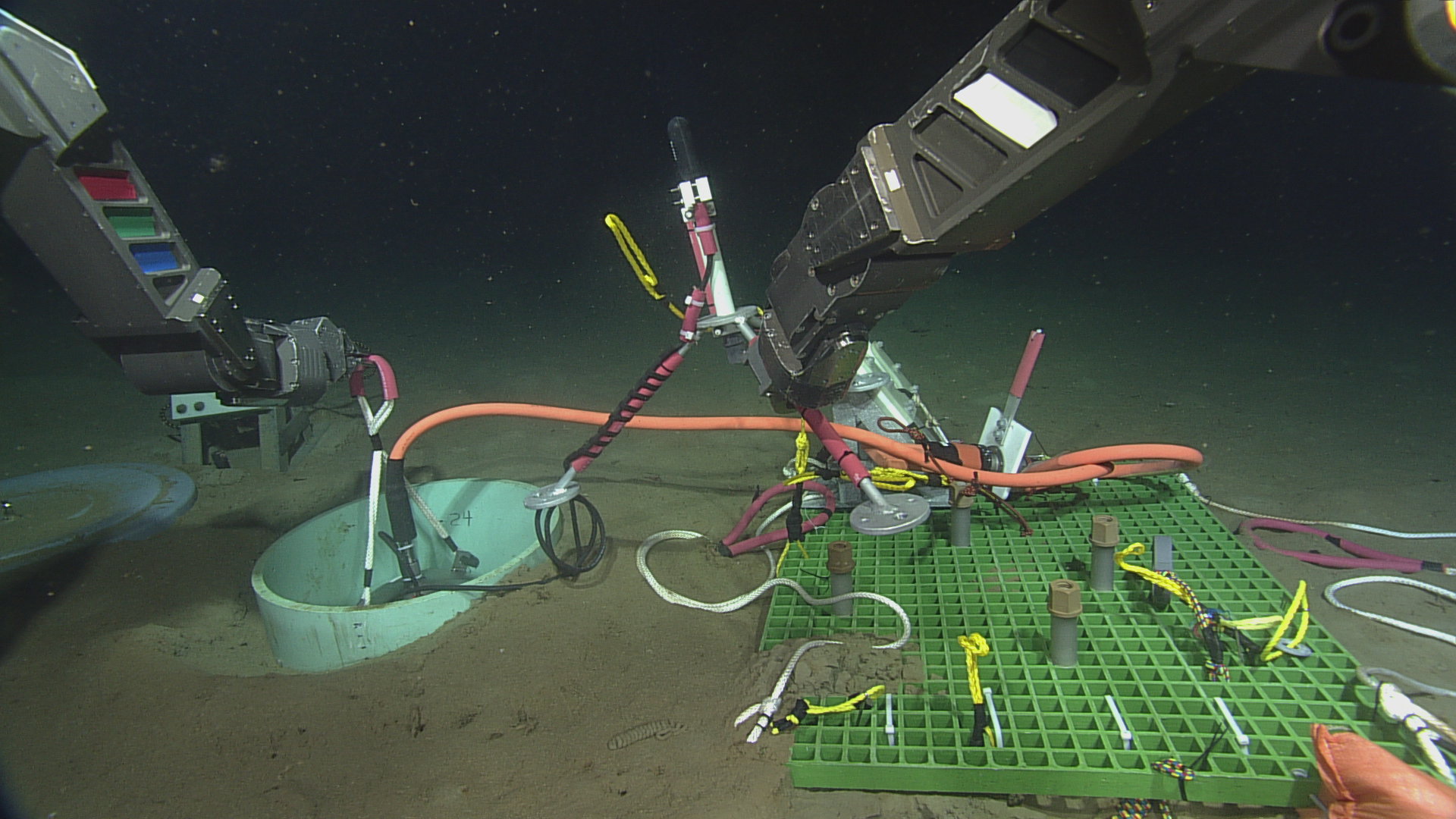
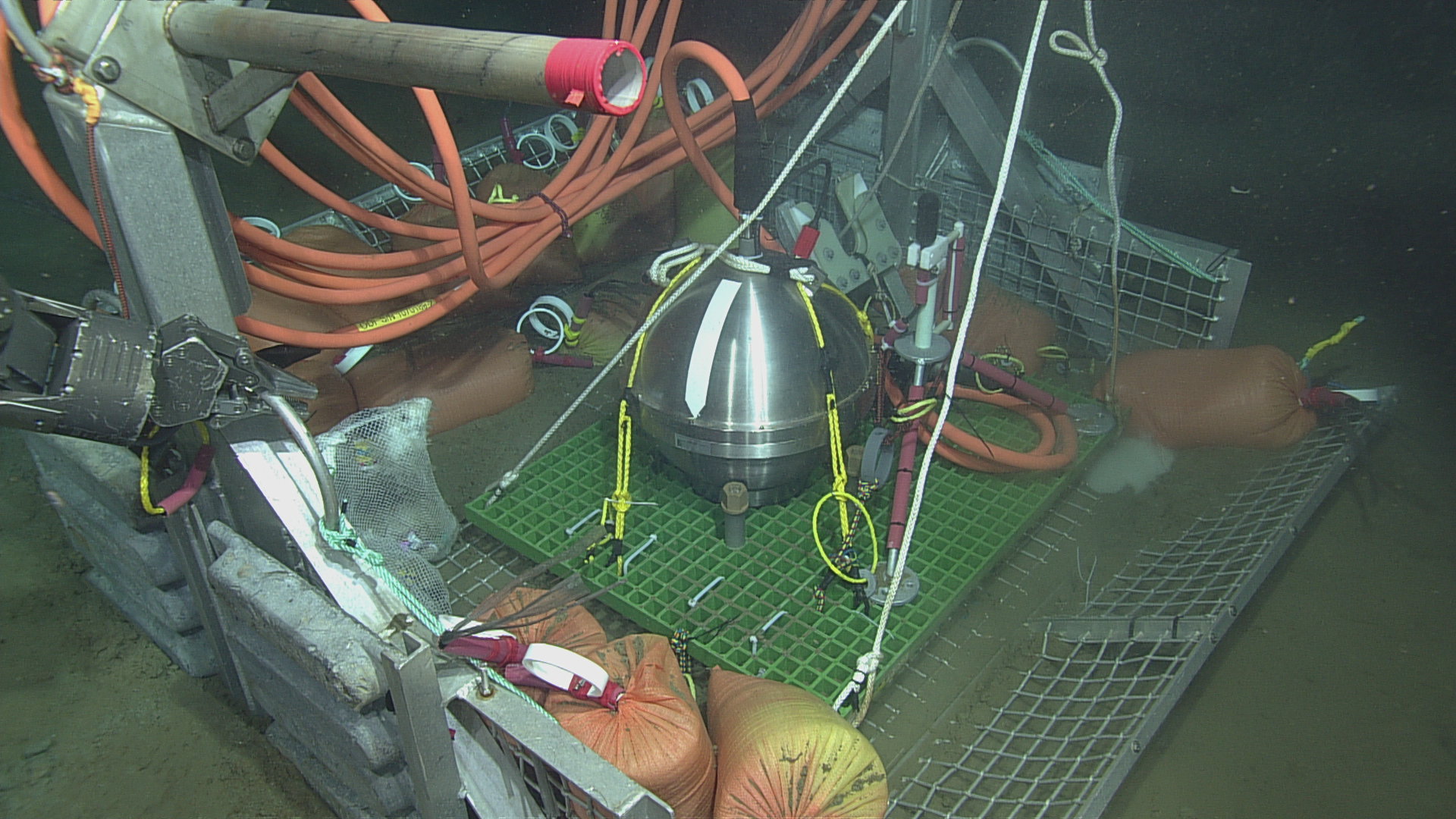

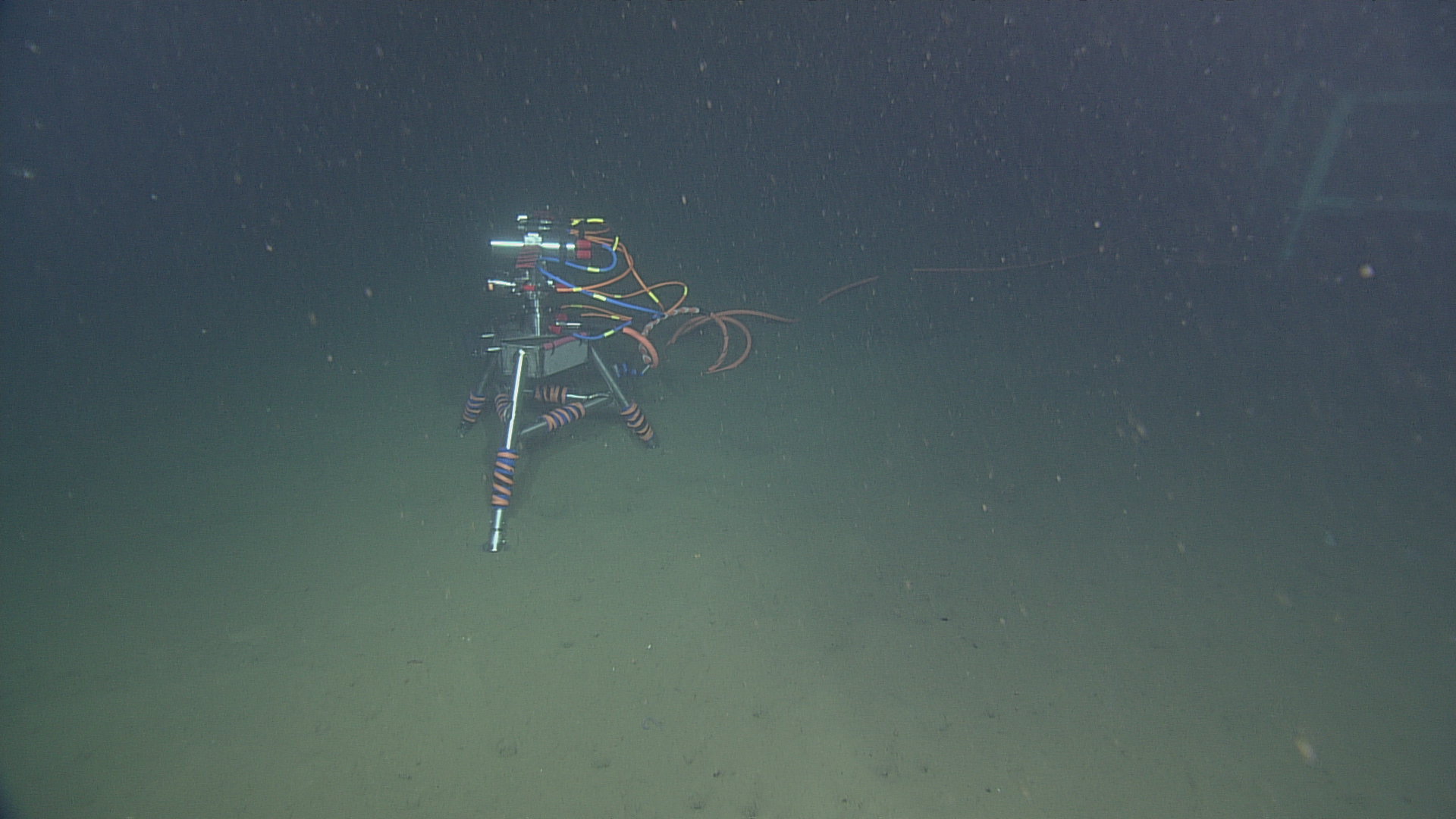













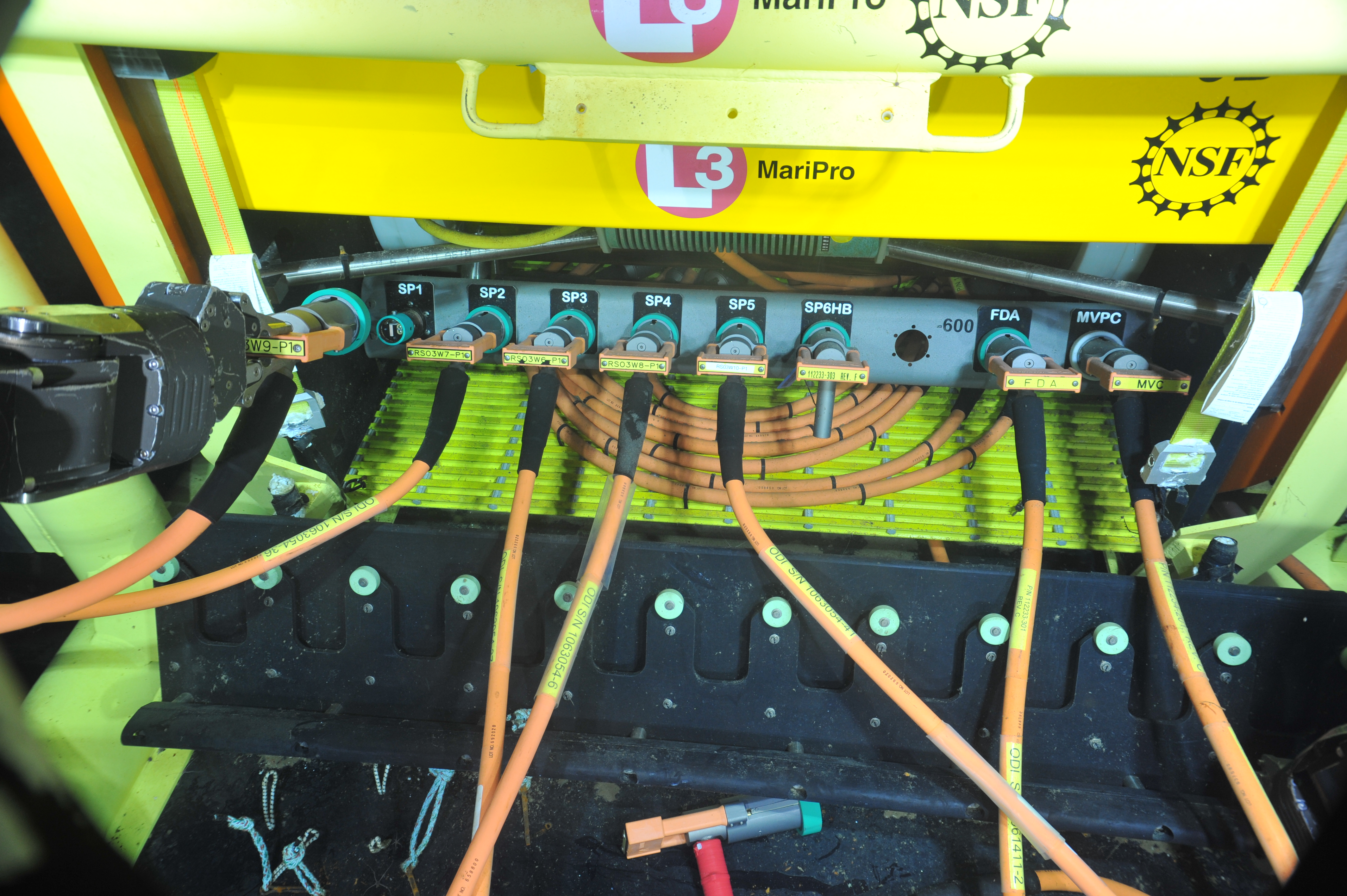


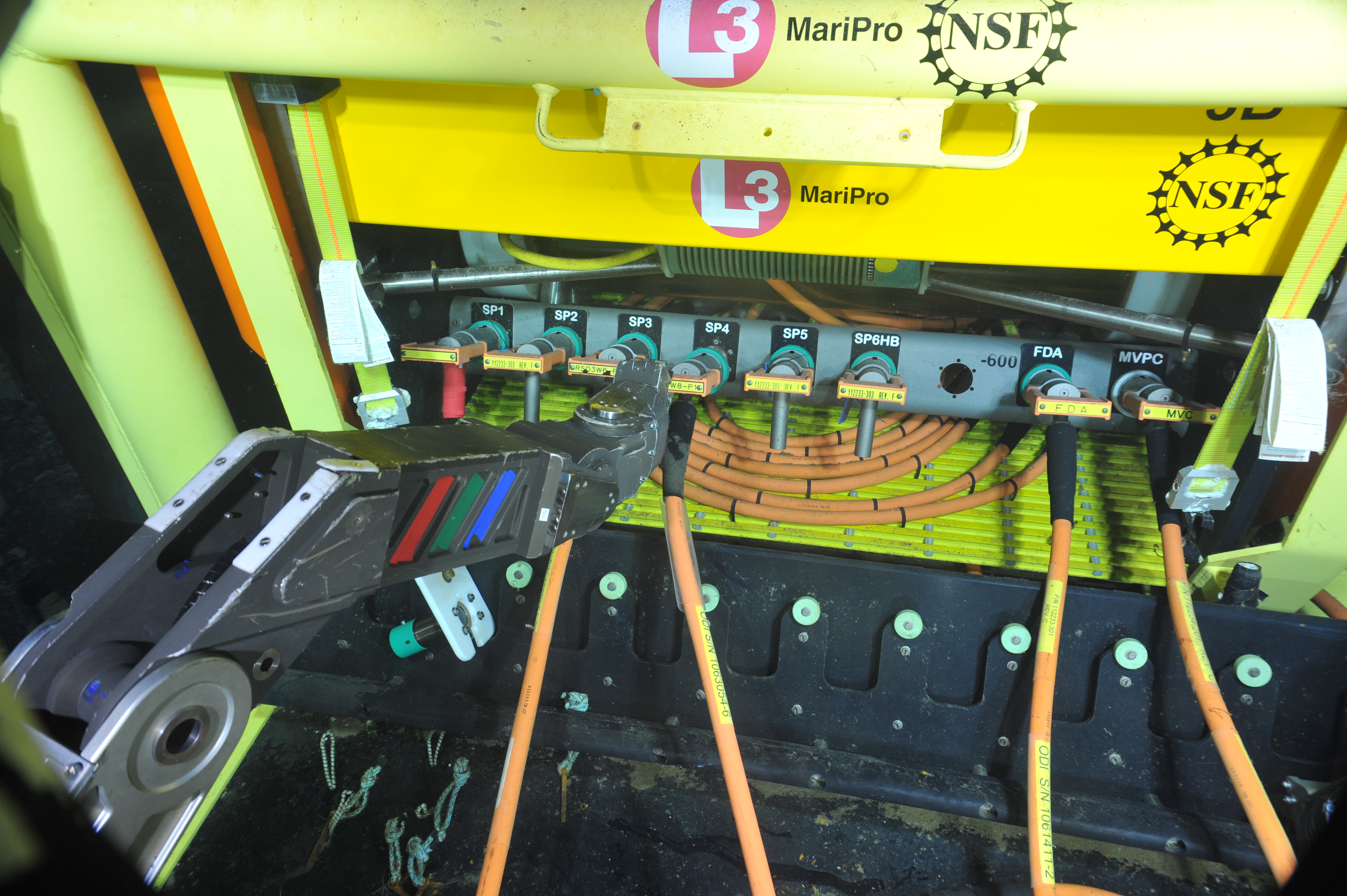
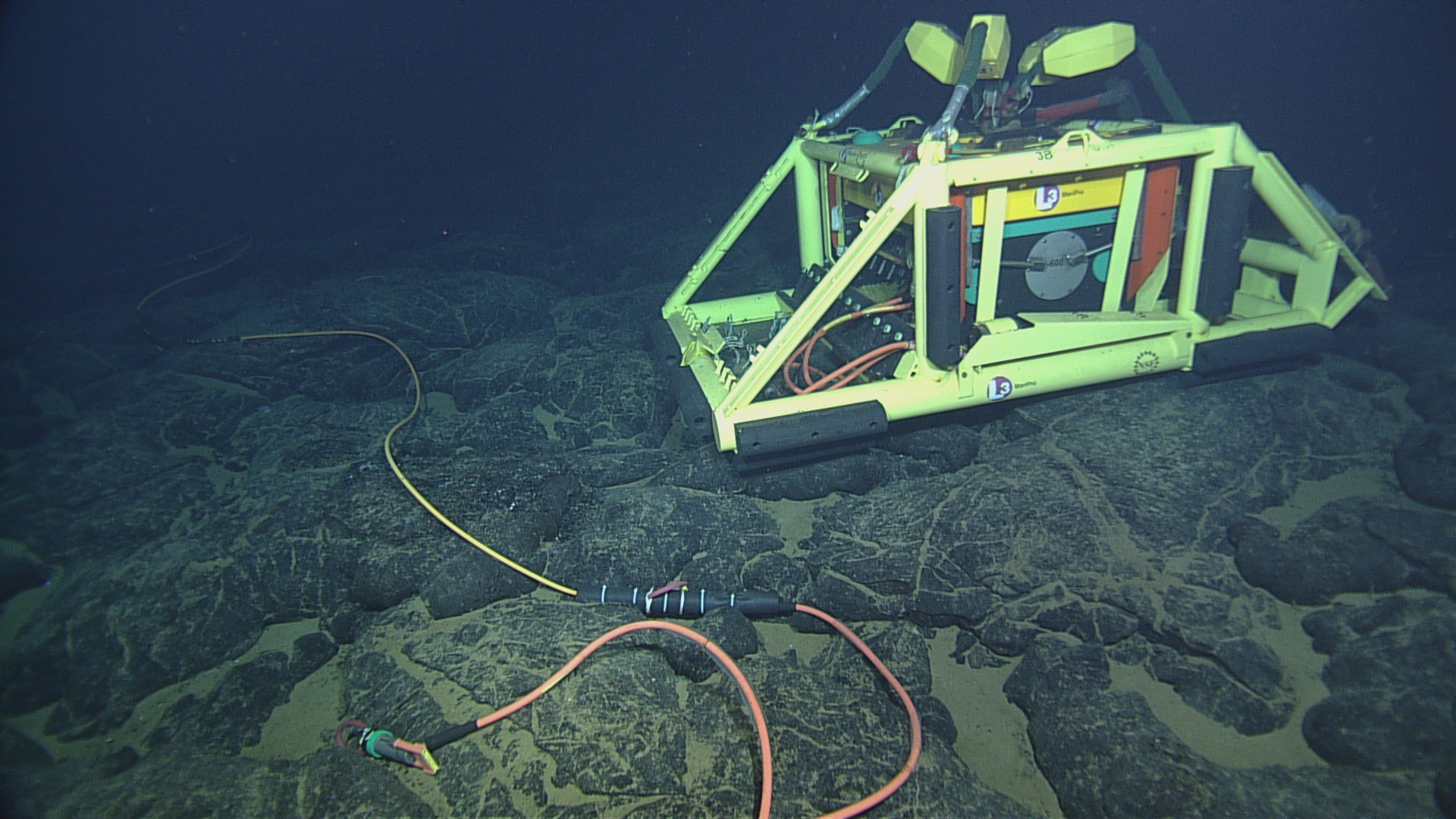

The cabled coastal surface-piercing profiler (cCSPP) was delivered to the seafloor by ROPOS and placed roughly 12 meters due East of the medium-powered junction box MJ01C at the Oregon Shelf site, in 79 meters of water. The cylindrical sensor pod of the cCSPP (left side of image) will float freely in the water column after being released from the deployment cradle on the profiler base. Once powered up, the sensor pod will move up and down in the water column at least 4 times per day, taking samples continuously using the onboard CTD, oxygen, fluorometer, nitrate, AC-S, PAR sensor, spectral irradiance, and 3D water velocity sensors. Photo Credit: NSF/UW/CSSF, Dive R1801, V14

The sensor pod of the cabled coastal surface-piercing profiler (cCSPP) floating freely in the water column after being released from the deployment cradle on the profiler base. Once powered up, the sensor pod will move up and down in the water column at least 4 times per day, taking samples continuously using the onboard CTD, oxygen, fluorometer, nitrate, AC-S, PAR sensor, spectral irradiance, and 3D water velocity sensors. Photo Credit: NSF/UW/CSSF, Dive R1801, V14

Deployment of the 200m platform of the Endurance Oregon Offshore two-legged mooring, which will eventually host a winched shallow profiler and bioacoustic sonar instruments. Two mooring lines with seafloor anchors are attached to the sides of the platform (rather than the usual single mooring line) to add stability to the platform so it can act as the profiler base. Photo Credit: Skip Denny, APL/UW

Deployment of the 200m platform of the Endurance Oregon Offshore two-legged mooring, which will eventually host a winched shallow profiler and bioacoustic sonar instruments. Two mooring lines with seafloor anchors are attached to the sides of the platform (rather than the usual single mooring line) to add stability to the platform so it can act as the profiler base. Photo Credit: Skip Denny, APL/UW
The sonar beacon being removed from the Endurance Oregon Offshore Shallow Profiler 2-legged mooring junction box, post-deployment. Photo Credit: NSF-OOI/UW/CSSF, Dive R1752, V14

All deployed Slope Base infrastructure connected to primary node PN1A. Photo Credit: NSF-OOI/UW/CSSF, Dive R1751, V14

ROPOS lowering the Slope Base seismometer into the previously excavated caisson. After deployment, the caisson was filled with glass beads to couple the seismometer to the seafloor. The attached hydrophone tripod is being held in the starboard arm of ROPOS, and was deployed alongside. Photo Credit: NSF-OOI/UW/CSSF, Dive R1751, VISIONS14

The Slope Base seismometer and hydrophone in the ROPOS toolbasket, prior to deployment in the previously excavated caisson. Photo Credit: NSF-OOI/UW/CSSF, Dive R1751, VISIONS14

The hydrophone tripod connected to the BEP at the Endurance Oregon Offshore site. The hydrophone is an underwater microphone listening for marine mammal vocalizations, anthropogenic noise, and other acoustic signals. It is offset from the BEP site by ~10 meters to reduce background noise. Photo Credit: NSF-OOI/UW/CSSF, Dive 1747, V14

The digital still camera deployed the Oregon Offshore site (600 m). Photo Credit: UW/NSF-OOI/CSSF, ROPOS Dive 1747, V14.

The digital still camera in the ROPOS toolbasket during deployment at the Oregon Offshore site (600 m); the camera at is designed to look at the seafloor in general, observing animal activity, sediment transport, detritus falls, and bioturbation. Credit: UW/NSF-OOI/CSSF, Dive 1747, V14.

The Benthic Experiment Package on the seafloor at Endurance Oregon Offshore, connected to the low-voltage node LV01C by the cable extending under the protective doors. The oxygen sensor is visible on the left side, and the 3D velocimeter and ADCP can be seen on the top left and right (respectively). Photo Credit: NSF-OOI/UW/CSSF, Dive 1747, V14

Primary Node PN1C provides power and bandwidth to the Oregon Offshore site (600 m). Because it is in shallow waters, it hosts a 'trawl resistant' frame - here with the protective doors closed. Credit: UW/NSF-OOI/CSSF, ROPOS Dive 1747, V14.

Removing the hydrophone tripod from the Benthic Experiment Package (BEP) during deployment at Oregon Offshore site (600 meters depth). The hydrophone was moved ~8 meters away to avoid picking up noise from the other sensors in the BEP. Credit: UW/NSF-OOI/CSSF, ROPOS Dive 1745, V14.

The Benthic Experiment Package (BEP) deployed at the Offshore site (600 meters depth) and plugged into low-voltage node LV01C. Photo Credit: UW/NSF-OOI/CSSF, ROPOS Dive 1745, V14.

Seafloor cable RS01W9 and strain relief carabiners connected to the low-voltage node LV01C at the EOffshore site, 600 meters deep.Photo Credit: UW/NSF-OOI/CSSF, ROPOS Dive 1744, V14.

ROPOS connecting the P2 end of seafloor cable RS01W9 into the J1 port on LV01C. RS01W9 runs between PN1C and LV01C at the Endurance Offshore site, 600 meters deep. Photo Credit: NSF-OOI/UW/CSSF, Dive 1744, V14

Primary Node PN1C 1 km from the Oregon Offshore site ais home to numerous crabs. Credit: UW/NSF-OOI/CSSF, ROPOS Dive 1743, V14.

Primary node PN1C at Endurance Offshore was deployed in a trawl-resistant frame, including doors over the connection points. ROPOS cut through the straps and opened the doors in preparation for laying cable RS01W9 from PN1C to LV01C. Photo Credit: NSF-OOI/UW/CSSF, Dive R1743, V14

The equipment and instruments to be deployed at Endurance Offshore and Slope Base during Leg 3 of VISIONS 14. Photo Credit: Skip Denny, APL-UW

The Deep Profiler at Axial Base docked in its charging station at the bottom of the mooring. The yellow profiler vehicle climbs up and down the mooring wire between the seafloor and the top buoy, collecting oceanographic data on thin layers in the water column. Photo Credit: NSF-OOI/UW/CSSF, Dive 1742, VISIONS14

All Axial Base seafloor infrastructure is now connected to Primary Node PN3A. Photo Credit: NSF-OOI/UW/CSSF, Dive 1742, V14

An action shot of the modified McLane Deep Profiler at the Axial Base site crawling up the mooring wire. The yellow profiler vehicle climbs up and down the mooring wire between the seafloor and the top buoy, collecting oceanographic data on thin layers in the water column. Credit: UW/NSF-OOI/CSSF, Dive 1742, V14.

On August 8, 2014 all Secondary Infratructure at the summit of Axial Seamount was connected to Primary Node PN3B. Here, cable RS03W9 is being plugged into the SP1 port on PN3B. Photo Credit: NSF-OOI/UW/CSSF, Dive 1741; V14.

ROPOS collecting the dummy plugs and parking brakes from plugging infrastructure into primary node PN3B at Axial Caldera. A spider crab can be seen in the background. Photo Credit: NSF-OOI/UW/CSSF, Dive 1741, V14

Cable RS03W6 successfully plugged into SP3 on primary node PN3B at Axial Caldera. Photo Credit: NSF-OOI/UW/CSSF, Dive 1741, V14

ROPOS attempting to plug seafloor cable RS03W8 into SP4 on primary node PN3B at Axial Caldera. Photo Credit: NSF-OOI/UW/CSSF, Dive 1741, V14

Primary Node PN3B at Axial Caldera, along with cable RS03W9. Photo Credit: NSF-OOI/UW/CSSF, Dive 1741, V14
- Anemone
- Animal
- Arthropod
- ASHES
- Axial
- Axial Base
- Axial Biology
- Axial Caldera
- Bacteria
- Basalt Lava
- BEP
- Biofouling
- biolgoy
- Biology
- Camds
- Camera
- Camhd
- Central Caldera
- Ciliates
- Cnidaria
- Coastal Biology
- Crab
- Deep Profiler Mooring
- Dive Highlights
- Eastern Caldera
- Echinoderms
- Endurance Array
- Engineering Team
- ENLIGHTEN 10
- Exploratorium
- Fish
- Geology
- HD Camera
- HPIES
- Hydrate Ridge
- Hydrates
- Hydrophone
- Hydrothermal Vents
- Illustration
- Inshore 80 Meters
- Instrument
- International District
- J-BOX
- Jason
- Jellyfish
- Junction Box
- K12
- Lava
- Mollusk
- Moorings
- Nodes
- Nudibranch
- Octopus
- OOI
- Oregon Offshore
- Oregon Offshore 600 m
- Oregon Shelf
- Oregon Slope Base
- People
- PN1B
- PN1D
- Polychaetes
- PPSDN
- Primary Node
- RASFL
- ROCLS
- ROPOS
- ROPOS Dives
- ROV Team
- RV Revelle
- RV Sikuliaq
- RV Thompson
- Salp
- Sample
- SC13
- Science Team
- Sea Cucumber
- Sea Star
- Sea Urchin
- Seafloor
- Seismometer
- Sensors
- Shallow Profiler Mooring
- Shark
- Shipboard
- Shore Station
- Slope Base
- Smoker
- Soft Coral
- Southern Hydrate Ridge
- Sponge
- Squid
- Students
- Students & Guest Participants
- Tmpsf
- Tubeworms
- VISIONS 11 Leg 1
- VISIONS 11 Leg 2
- VISIONS 11 Viewers
- VISIONS 13
- VISIONS 14
- VISIONS 15
- VISIONS 16
- VISIONS 17
- VISIONS 18
- VISIONS 20
- VISIONS 22
- VISIONS 23
- Visualization
